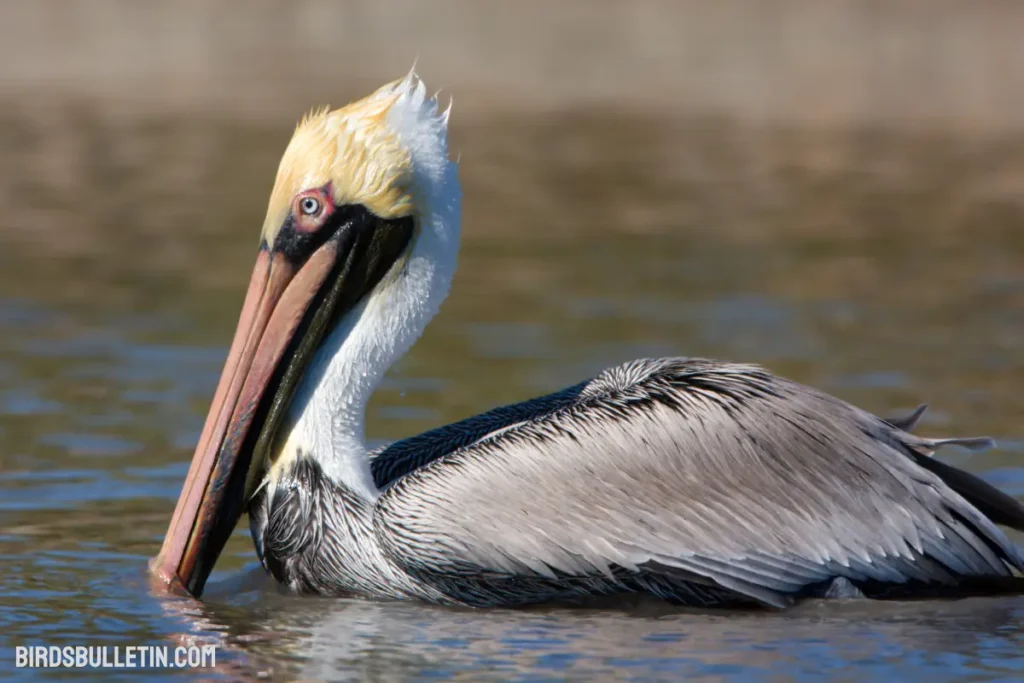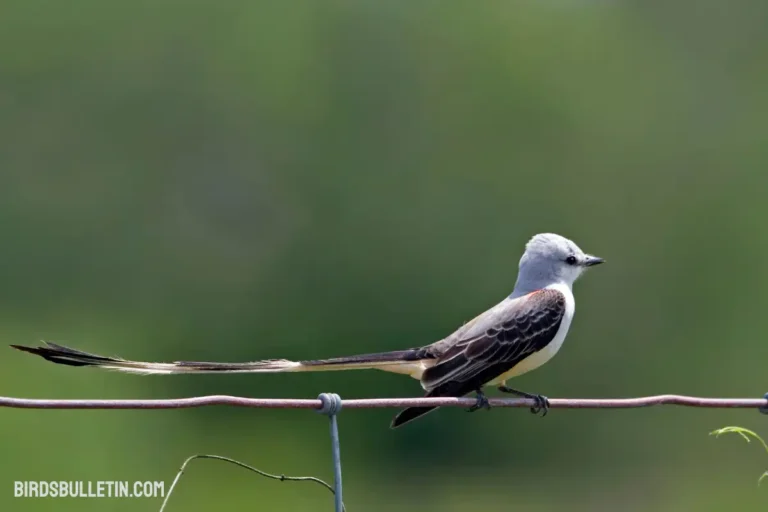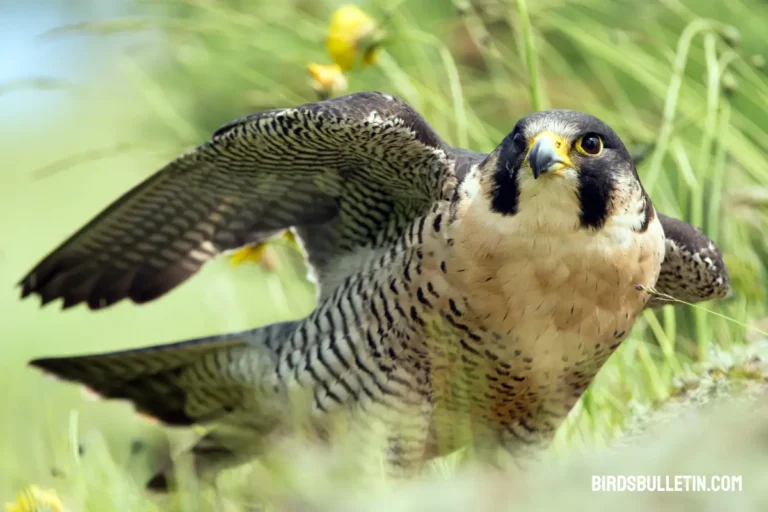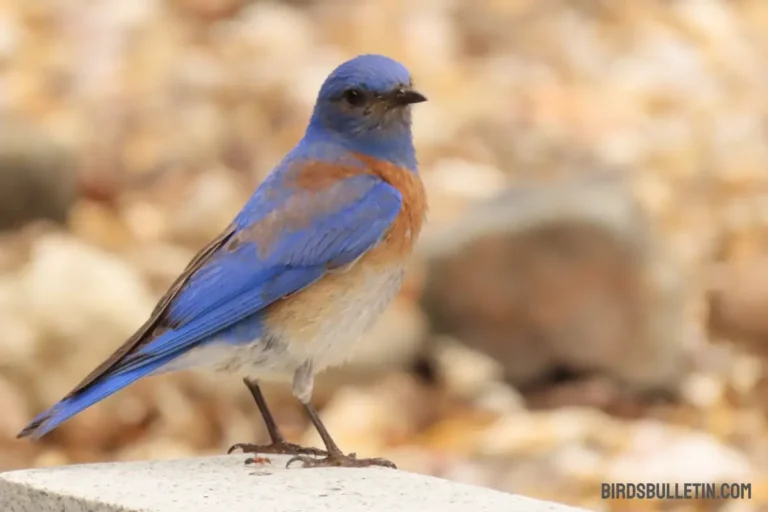Brown Pelican: Behavior And Subspecies
The Brown Pelican was first described scientifically by Swedish zoologist Carl Linnaeus in 1766, who gave it the binomial name Pelecanus occidentalis. These large, fish-eating waterbirds have a fascinating life history intimately connected to their marine environment.
In this article, we’ll explore key aspects of the biology, ecology, and conservation of this iconic species.
Interested in similar topics on birds overview:
What Are the Identifying Features of The Brown Pelican?
Here is a step-by-step overview of the identifying features of the Brown Pelican:
01. Body Shape – They have a bulky body shape with a long neck and a large bill. Their body appears stocky while in flight.
02. Bill – Their bill is very long (up to 18 in) and straight. The lower half of the bill has a pouch of skin attached to it.
03. Plumage – Their plumage is predominantly grayish-brown in color over most of the body, with a paler yellowish head and neck. The belly becomes whitish during the breeding season.
04. Feet – Their feet are fully webbed, with all four toes connected by webbing. This aids their swimming and diving abilities.
05. Wings – Long, broad wings that they keep straight while soaring. Wings appear black-brown from below when in flight.
06. Tail – Short tail of all-dark feathers. The tail is usually not visible when swimming or flying.
07. In-Flight – When flying, brown pelicans hold their necks in a tight S-shape curve and glide with flat, level wings.
08. Juveniles – Younger birds are brownish-gray overall without the pale-yellow head and white belly. They attain adult plumage in 3-4 years.
09. Gender – Male and female brown pelicans look alike. Breeding birds develop bright colors on the bill and pouch.
Brown Pelican Profile
| Feature | Description |
|---|---|
| Scientific Name | Pelecanus occidentalis |
| Alternative Names | American brown pelican |
| Color | Grayish-brown body, pale yellow head, and neck, white belly in breeding season |
| Lifespan | 25-30 years normally, recorded up to 43 years |
| Wingspan | 6.5 feet |
| Weight | 11 pounds |
| Size | 40-54 cm long |
| Diet | Fish, some crustaceans and amphibians |
| Breeding Season | Between spring and summer north of 30° N latitude and between winter and spring between 30° N and 20° N latitude. |
| Eggs Laid | 2-3 eggs typically |
| Locations | Coastal regions of the Americas |
| Threats | Oil spills, reduced fish stocks, disturbance at nesting colonies |
| Predators | Hawks, eagles, and vultures take eggs or young |
| Prey | Small schooling fish like sardines, anchovies, menhaden |
In What States Is the Brown Pelican the Official State Bird or Symbol?
The Brown Pelican is the state bird of Louisiana, representing an important coastal species in the Gulf of Mexico ecosystem. It was designated the state bird in 1966, though it disappeared from Louisiana decades prior due to pesticide impacts before successfully recolonizing.

Brown Pelicans also appear on the seals of the U.S. Virgin Islands and Corpus Christi, Texas in recognition of its regional significance. The pelican’s likeness graces their state flag in Louisiana.
Is The Brown Pelican One Species or Many Subspecies?
Brown Pelican is now known to consist of five recognized subspecies found in coastal regions across the Americas. These subspecies differ somewhat in size, pouch coloration during breeding season, certain plumage details, and geographic distribution, though their phenotypes are otherwise very similar:
01. California Brown Pelican (P.O californicus) live along the Pacific coast from California to Jalisco, Mexico, ranging north to British Columbia when not nesting.
02. Eastern Brown Pelican (P.O carolinensis) breeds along the Atlantic, Gulf, and Caribbean coasts of North and Central America, from Maryland to Panama. Its non-breeding range extends north to New York.
03. Caribbean Brown Pelican (P.O occidentalis) stays across the West Indies, Bahamas, and Caribbean coast of South America up to Trinidad and Tobago.
04. Pacific Brown Pelican (P.O murphyi) is found along the Pacific coast from Colombia to northern Peru.
05. Galapagos Brown Pelican (P.O urinator) is endemic to the Galapagos Islands.
How Large Is the Global Population of Brown Pelicans?
The global population of Brown Pelicans is estimated at 650,000 mature individuals. The United States population along the Gulf Coast and southeastern seaboard makes up around half this total.
The largest single breeding colony occurs in the West Indies with up to 290,000 birds. Pelican populations declined through the mid-1900s but have rebounded in many regions following increased protections. Their populations can fluctuate widely based on food supplies.
When And Where Does the Brown Pelican Migrate?
Brown pelicans demonstrate flexible migration patterns depending on the region. Along the Pacific and Atlantic/Gulf coasts of the United States, most breeding populations remain resident year-round in their nesting areas rather than undertaking regular seasonal migrations.
However, some post-breeding dispersal does occur, particularly northward up the coasts in summer and fall. On the Pacific coast, brown pelicans may range as far north as British Columbia during late summer and fall months after the breeding season ends.
As winter approaches, they retreat from the farthest reaches of their range and return south to settle along the warmer waters of the California and Gulf coasts again.
What Behaviors and Adaptations Help the Brown Pelican Thrive?
The oversized bill and expandable throat pouch of Brown Pelicans are perfectly adapted for plunge-diving to catch fish. Upon spotting prey from high up, they fold their wings back and dive straight down, piercing the water and trapping fish in their pouch. The pouch can hold up to 3 gallons of water and dozens of fish.
Pelicans work together by coordinating dives and driving fish into dense schools. They may also steal caught fish from other pelicans. At nest colonies, mates offer elaborate displays, using their bill and pouch to signal pairing. Pelicans nest in trees, bushes, or ground scrapes on undisturbed islands.
How Have Humans Connected with The Brown Pelican?
The Pelicans have long featured in the folklore, art, and cuisine of coastal communities where they occur. Their likeness has been used in logos, sports mascots, postage stamps, and more. Seeing pelicans skillfully dive for fish provides endless entertainment.
However, negative perceptions also exist due to pelicans competing with commercial fisheries for certain stocks. Culling was historically practiced. Pelican eggs and young were also over-harvested. But modern protections have shifted attitudes to appreciation of pelicans as iconic coastal birds.
What Conservation Issues Currently Impact Brown Pelicans?
In the 1960s-70s, DDT pesticide accumulation caused catastrophic eggshell thinning, severely impacting pelican reproduction. Following DDT’s ban, populations recovered across North America.
Today, oil spills, disturbance at nest colonies, reduced fish stocks, and entanglement in fishing gear pose regional threats. But protected status has allowed populations to rebound overall.
What U.S. Laws Protect Brown Pelicans?
Brown Pelicans gained federal protection in 1970 under the Endangered Species Conservation Act and subsequent Endangered Species Act. Following recovery successes, the U.S. population was delisted in 2009 but remains federally protected under the Migratory Bird Treaty Act. States regulate the disturbance of nesting colonies. Internationally, CITES limits the trade of pelican parts.
Frequently Asked Questions
01. What is the meaning behind their large throat pouch?
This elastic pouch acts as a net to catch fish while plunge diving. The impact forces the pouch open wide to engulf and trap prey underwater.
02. Why do they nest in large crowded colonies?
Nesting together provides safety from predators through group defense. Limited suitable island sites with food access lead to dense colonies.
03. How deep can Brown Pelicans dive while hunting for fish?
Brown Pelicans can dive from heights of up to 60 feet (18 meters) and reach depths of around 6 feet (1.8 meters) when hunting for fish. Their exceptional diving abilities enable them to capture prey swiftly and accurately.
04. Are Brown Pelicans affected by climate change?
Yes, Brown Pelicans are vulnerable to the impacts of climate change, including rising sea levels, changing ocean temperatures, and disruptions in prey availability. These factors can affect their habitats and food sources.
Wrapping UP
The Brown Pelican remains an important part of the coastal ecosystems it inhabits. Through successful protections, this once-endangered species has rebounded and provides an iconic symbol of productive marine habitats worldwide.
Maintaining healthy fish populations and protecting nesting sites will ensure Brown Pelicans continue their amazing dive-fishing feats for generations to come.







